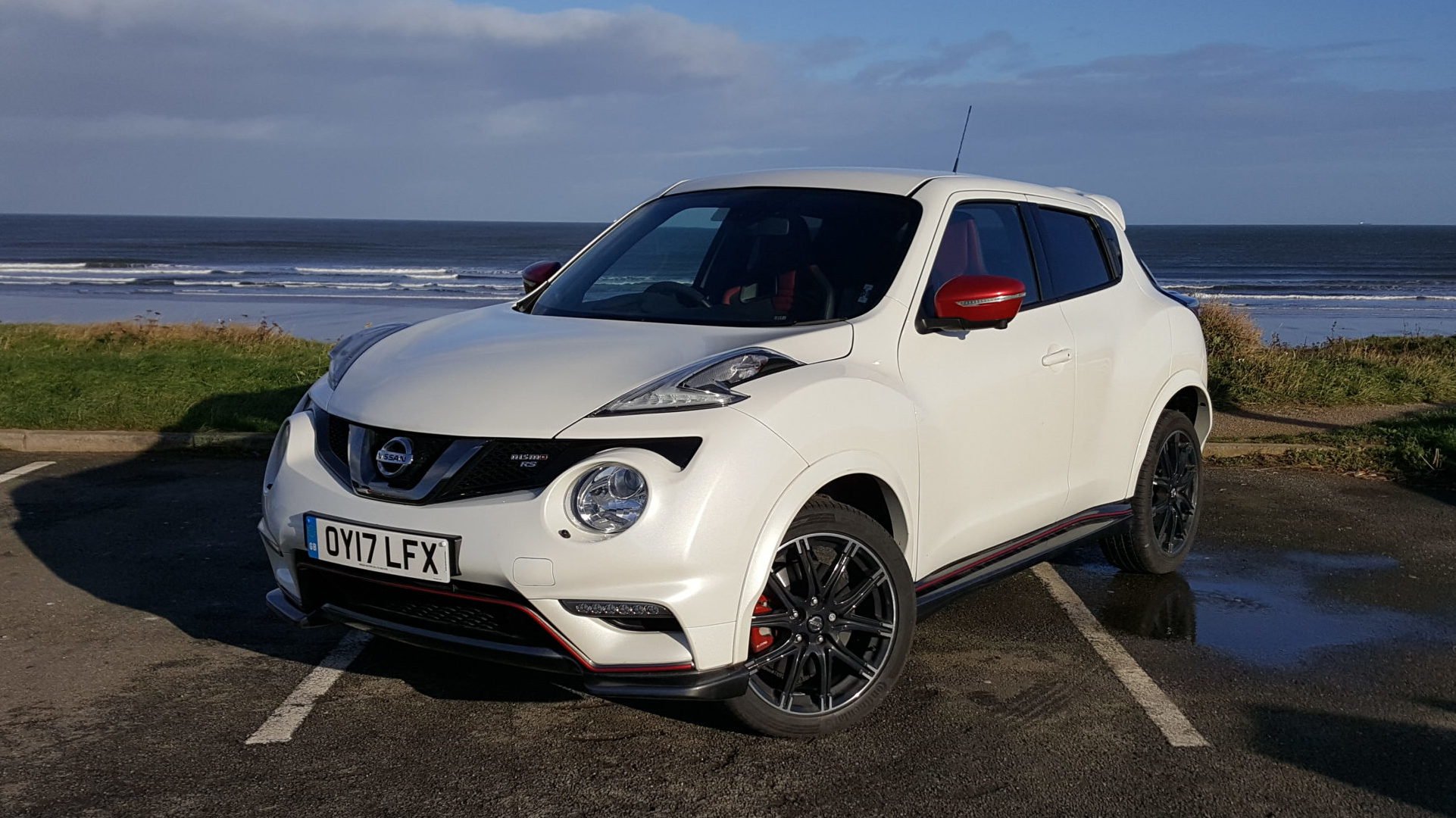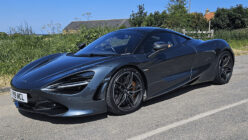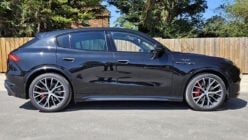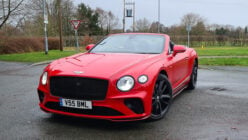When Nissan launched the Juke in 2010, reactions were varied to say the least. In a classic case of judging the book by its cover, some in the automotive press were not terribly kind.
Public response was more positive, and the Juke came to not only define a sector but drove car design as rivals tried to find a response.
With the news this week that the Juke is not long for this world and a replacement is in the wings, we thought we’d try out the pick of the bunch, the range-topping Nismo RS.
Umm… eww?
That’s a fairly typical car enthusiast’s response, but we’re wrong. Joe Q. Public (and his wife Jemima) bought Jukes by the absolute hatful.
It’s really difficult to write any review of the Juke without mentioning “divisive looks”. The fact is though that Nissan created something really very different with the Juke. Other manufacturers have been scrambling to keep up with some contrived and very fussy designs.
And it’s been with us for seven years. If it were as universally awful as forums would lead us to believe, it would have died before the first facelift in 2014. It didn’t — people kept buying it.
In any case you should be used to it by now; it’s been around for seven years after all. You’ll miss it when it’s gone too, and the replacement model, the Nissan Kicks, is already under fire for its conservative and derivative looks…
Okay, so what’s special about the Nismo?
Nismo is Nissan’s motorsports arm (NISsan, MOtorsport). Any race car in any race series that’s an official Nissan factory entry is a Nismo.
So the Juke Nismo is a race car? Not exactly. You see Nismo is also Nissan’s name for tweaked and hotted-up road cars. You’ll see the Nismo name on the Nissan GT-R, where it packs 600hp, and the 370Z.
The Juke Nismo RS is a little more modest and a lot more front-wheel drive, but in terms of Jukes it’s absolutely manic. An ordinary Juke packs slightly more than 100hp. The “DIG-T” petrol turbo model winds that up to nearly 190hp. The Juke Nismo is nudging 220hp, or around double what you’d get at entry level.
Chuck in a larger braking system, a mechanical limited slip differential, and stiffer suspension and you get a Juke Nismo RS. It also draws from the same color palette — pearlescent white (or black) with red accents — and Nismo badging everywhere.
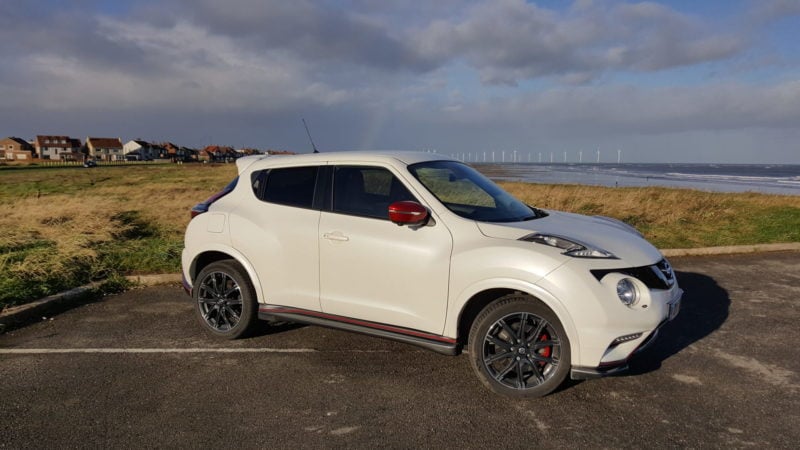
Pretty sporty then?
Strangely, the Nismo RS model manages to be the complete opposite of the regular Juke in just about every possible way.
Take any non-Nismo Juke and you’ll spot that it’s eager but a bit slow. Even that 190hp DIG-T feels like a lot less than 190hp, and it’s rather the same in the Pulsar. They’re city car-quick — not a surprise as the Juke is a B-segment car underneath and a not too distant cousin of the Clio. That’s to say that they’re responsive and have a bit of zip about them, but to a limit, and rather a close one.
The Nismo RS isn’t that at all. In the most responsive driving mode it’s still a car that really needs to be in the right gear for the situation at all times around town. Yet on open roads it’s really very rapid indeed. Also, the Nismo exhaust sounds excellent.
This car is hot hatch quick, which again shouldn’t be too much of a surprise because it shares a lot of the basics with the Renaultsport Clio RS and isn’t significantly different on a weighbridge. Nissan’s figures have the Nismo RS pegged as hitting 60mph in seven seconds and that seems to be grossly pessimistic. Given 440 yards of runway, we reckon the only car in the class that will be ahead is Peugeot’s 208 GTI by Peugeot Sport.
If you’re anticipating a “but” at this point, you’d be quite right. The regular Juke is also actually surprisingly good fun to drive. Sure, it’s tall enough to roll about a bit on the softish springs, but as far as cars of this type go it’s got a bit of charm often lacking.
Again, the Nismo RS couldn’t be more different. It’s exceptionally firm — not jarring, per se, but irritating enough to make you plan your journeys so you don’t have to drive over train crossings or too many bridges. It retains decent round-town manners, so long as you dodge the speed bumps, but for longer runs it’s not ideal.
Not that you’ll take it on too many longer runs. The fuel economy is mediocre for a car this size and power, and we had it at around 20% worse than the Clio RS. That’s unwisely combined with a microscopic fuel tank of just 46 liters. This had us worrying about fuel just 100 miles into a 300 mile journey, and needing a splash and dash to complete it.
But where the car really suffers for us is on the B-road blast. The limited slip differential just doesn’t seem to be up to the job of holding the torque at bay, and the understeer when booting the RS out of a corner is significant. Even changing direction when, say, accelerating from a roundabout, requires a fine touch on both steering and throttle.
It’s not really helped by the fact that there’s still a decent amount of roll either. There’s not much that can be helped here, as the Juke is a tall car. It at least loads up progressively enough, but soon overwhelms the inside front tire with any application of power whatsoever.
That’s not to say that the Nismo RS is slower through the bends than a regular Juke, but it’s less enjoyable until you can get to a straight bit.
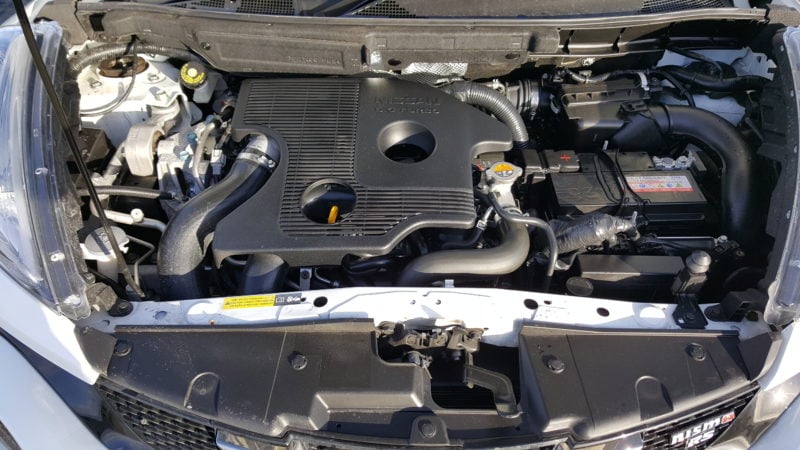
Any better on the inside?
The inside of the Juke has always been a different proposition. You can insert a “yes, you don’t have to look at it any more” joke here if you like, but it is quite a smart cabin.
One of the highlights has always been the center console. This is styled to resemble a motorbike from seat to fuel tank. We don’t know why, and we’re not arguing, but we do know that it ties the front and rear of the cabin together quite nicely and brings the gearstick right up into your hand. It’s one of the areas Nissan gives freedom for personalization, so you can have it any color you like. Here on the Nismo RS, it’s just plain black.
However, there’s enough suede and contrast stitching in here to really set the Nismo model apart from the rest of the range and the cabin is a pleasant place to be. Ergonomically it’s largely quite well thought-out. We’ve had the chance to batter a Juke Nismo around a few autocross courses and from a driver’s point of view the cabin layout really suits it.
The infotainment screen is a bit old hat now, and a little on the small side. This is a throwback to the car’s rather ancient origins, but at least it’s there. It includes a navigation system which is easy to use, and Bluetooth phone connectivity, although the call quality is a little below par compared to newer systems. The touch functions, particularly scrolling the map, are so-so too, but DAB and internet radio are standard.
Below the main screen is a color information screen that switches between the climate control and driving mode information, surrounded by clever dual-display buttons. That’s a little difficult to see at pace, thanks to the low position, so really it’s better to leave it in climate mode most of the time. Other standard equipment includes the sports seats, with a nicely atmospheric blend of suede and Nismo red. The surround-view reversing cameras are an optional extra, in a £900 safety pack, but a simple reverse camera is standard. Other than that and the optional white paint, this is a standard Nismo RS.
That means that there are a few technologies now becoming standard on B-segment cars that the Juke misses out on. Take heated seats, for example, which aren’t even an option. Nor are LED headlights. All that said, for such a relatively small and old car, it’s got enough equipment to keep you happy for the next three years, even if it’s showing its age in some areas.
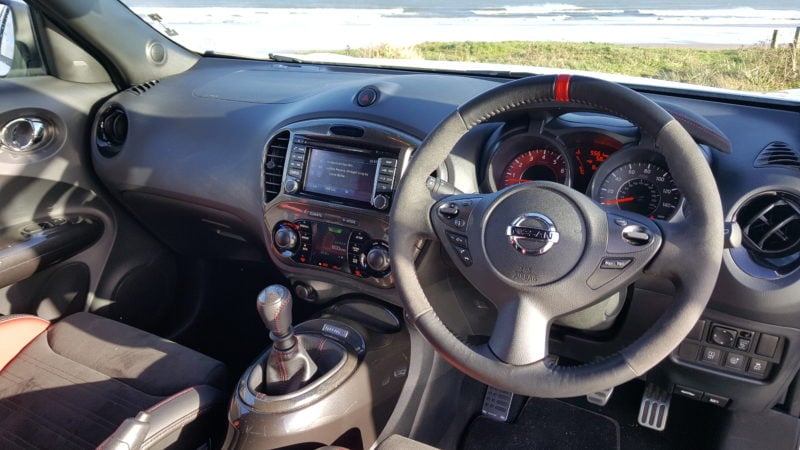
Who’s would buy it then?
The Juke Nismo RS appeals to two market sectors at once: people who like crossovers and people who like hot hatchbacks.
In fact for that reason alone, the Nismo RS should be really rather popular. The hot models of most B-segment hatches account for between a third and a half of all sales, and crossovers are the quickest growing segment of all.
It has rather a wide-ranging appeal then, as the only B-segment crossover hot hatch. It brings the high driving position and roofline together with hot hatch performance. Aside from the looks, we’re not sure who wouldn’t buy it, or at least consider it long enough for a test drive.
Anything they’d look at instead?
Not directly, no.
Almost nothing else this size has this kind of performance, and almost nothing else of this kind of performance is this size. It seems strange that in three years, no other manufacturer with a similar in-house tuning arm has thought to match it. We can only imagine what a Honda HR-V Type R would be like, or a Ford Ecosport ST.
So really you’d have to consider the usual suspects of the hot hatch world as the Juke Nismo RS’s rivals. That’s the ever-present Renaultsport Clio, Peugeot’s 208 GTI, the Vauxhall/Opel Corsa VXR/OPC and the Ford Fiesta ST. However, the last of that quartet is not likely to hit the market until after the Juke has left.
Not many of the B-segment crossovers get within even dust-eating distance of the Juke. While we’d hesitate to call it a rival in the truest sense, the Mazda CX-3, in 150hp AWD guise, is as close as you’re going to get for an alternative.
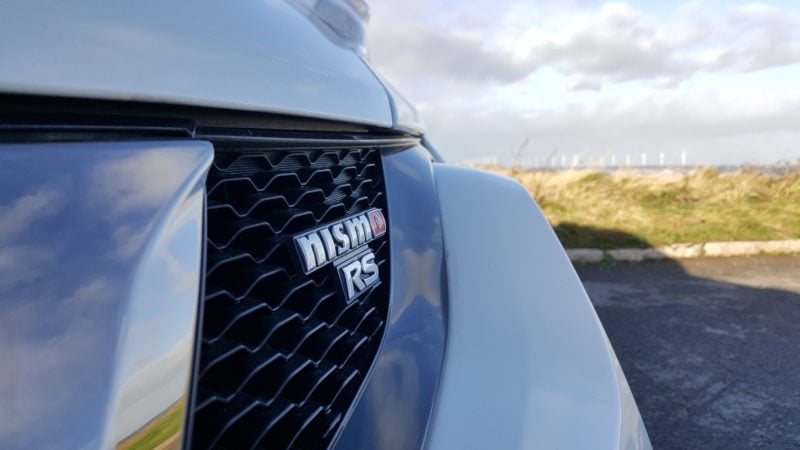
What’s the conclusion?
On the face of it, the Juke Nismo RS is one of those Venn Diagram cars. It’s a unique overlap between two of the most popular automotive sectors: hot hatches and crossovers. In concept then you shouldn’t be able to move for all of the Juke Nismo RS models all over the roads.
In practice though it makes for an underwhelming hot hatch due to the handling and, though much of the crossover practicality remains, the frequency of refueling visits really puts a dent in how easy it is to live with day to day.
It’s a car worth appreciating for the nice interior and the sheer madness of Nissan making a car that looks like that in the first place, never mind making a performance version of it. There’s a reasonable chance it will become a cult classic in the not too distant future, especially with the Juke’s cancellation.
In the here and now though there are better crossovers, and far better hot hatches, to spend your money on. But then who ever bought a car with logic and reason?
Verdict:
Nissan Juke Nismo RS
Learn more about how our rating system works.
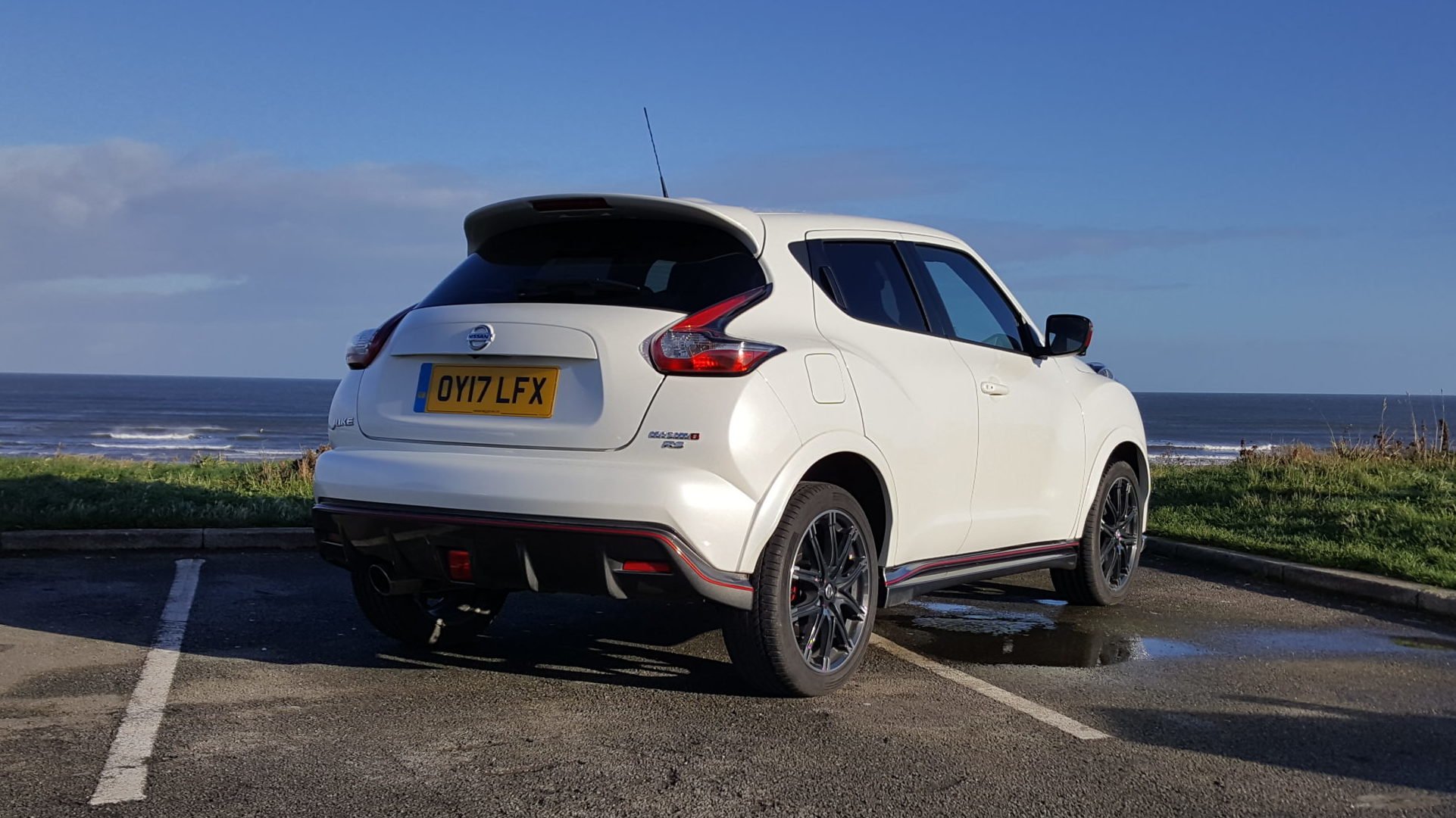
Quick Facts
See more articles on Nissan and Road Test Review.

